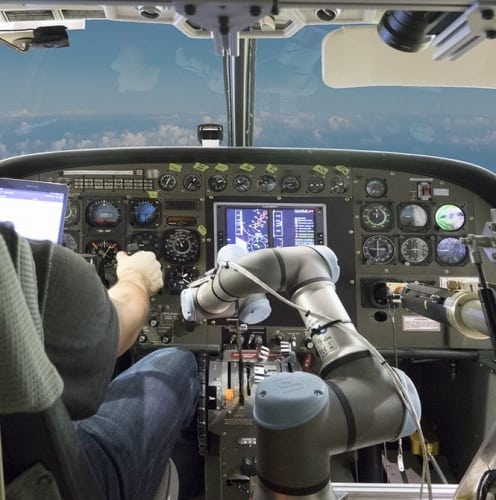
The Aircrew Labour In-Cockpit Automation System (ALIAS) uses a combination of machine vision, robotic controls, a tablet-based user interface, and speech recognition to assist in the cockpit. It also includes a “knowledge acquisition” process that allows the system to be adapted to another aircraft within 30 days.
Developed by Aurora Flight Sciences in partnership with DARPA, ALIAS is designed to operate under pilot supervision. According to the US agency, the programme’s aim is to create “a tailorable, drop-in, removable kit that would promote the addition of high levels of automation into existing aircraft, enabling operation with reduced onboard crew.”
ALIAS has successfully completed simulator and in-flight tests on a Diamond DA-42, and earlier this week showed its versatility by putting a Cessna Caravan single-engined turboprop through its paces under pilot supervision. The next phase of trials will see the system tested on a Bell UH-1 helicopter, the classic “Huey” seen in military service around the world since the 1950s. Aurora is currently developing a product based on ALIAS technology to supply both the civilian and defence markets.
“Demonstrating our automation system on the UH-1 and the Caravan will prove the viability of our system for both military and commercial applications,” said John Wissler, Aurora’s vice president of Research and Development.
“ALIAS enables the pilot to turn over core flight functions and direct their attention to non-flight related issues such as adverse weather, potential threats or even updating logistical plans.”




Labour pledge to tackle four key barriers in UK energy transition
I'm all for clarity and would welcome anyone who can enlighten me about what Labour's plans are for the size and scale of this Great British Energy....